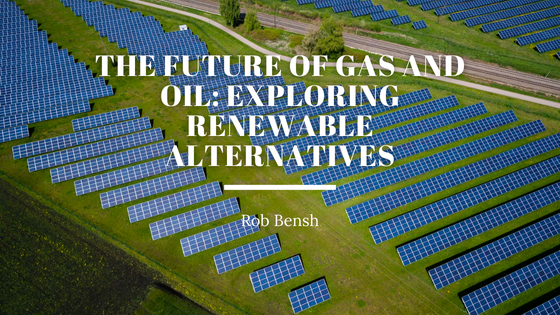In recent years, there has been a growing concern about the impact of fossil fuels on the environment. The extraction, transportation, and burning of oil and gas have been linked to climate change, air pollution, and other environmental problems. As a result, many people are exploring renewable alternatives to gas and oil to reduce their carbon footprint and minimize the negative impact on the environment. In this blog, we will discuss the future of gas and oil and explore renewable alternatives.
Firstly, it is important to note that gas and oil are finite resources. They are non-renewable and will eventually run out. As the demand for these resources continues to grow, it is becoming increasingly important to find alternative sources of energy. This is where renewable alternatives come in.
Renewable energy sources such as solar, wind, and hydroelectric power are becoming more popular as the technology becomes more advanced and cost-effective. Solar power, for example, is now one of the most cost-effective sources of electricity in many parts of the world. The cost of solar panels has dropped significantly in recent years, making it an affordable option for households and businesses. Wind power is also becoming more popular, with many countries investing in offshore wind farms to harness the power of the wind.
Another promising alternative to gas and oil is hydrogen fuel cells. Hydrogen is abundant and can be produced using renewable energy sources. Fuel cells use hydrogen to generate electricity, producing only water as a byproduct. This makes it a very clean and efficient source of energy.
In addition to renewable energy sources, there is also a growing interest in energy storage solutions. Energy storage is essential for renewable energy sources because they are intermittent – they only generate electricity when the sun is shining or the wind is blowing. By storing excess energy during times of high generation, it can be used during times of low generation. Batteries, such as those used in electric cars, are one example of an energy storage solution. There are also more advanced solutions being developed, such as flow batteries and thermal storage.
Of course, there are still challenges to overcome in the transition from gas and oil to renewable alternatives. One of the biggest challenges is the infrastructure required to support renewable energy sources. For example, building the necessary transmission lines and upgrading the electrical grid to support intermittent energy sources like solar and wind power. Another challenge is the cost of these alternative energy sources. Although the cost of renewable energy has been declining, it still requires a significant upfront investment to install solar panels or wind turbines.
In conclusion, the future of gas and oil is uncertain, but it is clear that renewable alternatives are becoming more important. With the technology becoming more advanced and cost-effective, it is likely that we will see a shift towards renewable energy sources in the coming years. However, this transition will require significant investment and infrastructure upgrades, and it will not happen overnight. Nonetheless, the benefits of renewable energy – cleaner air, a healthier environment, and energy independence – make it a worthy goal to pursue.
